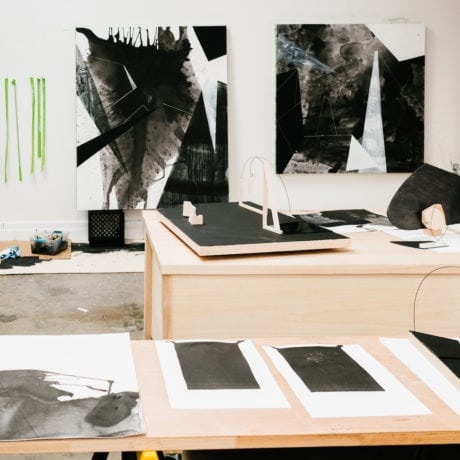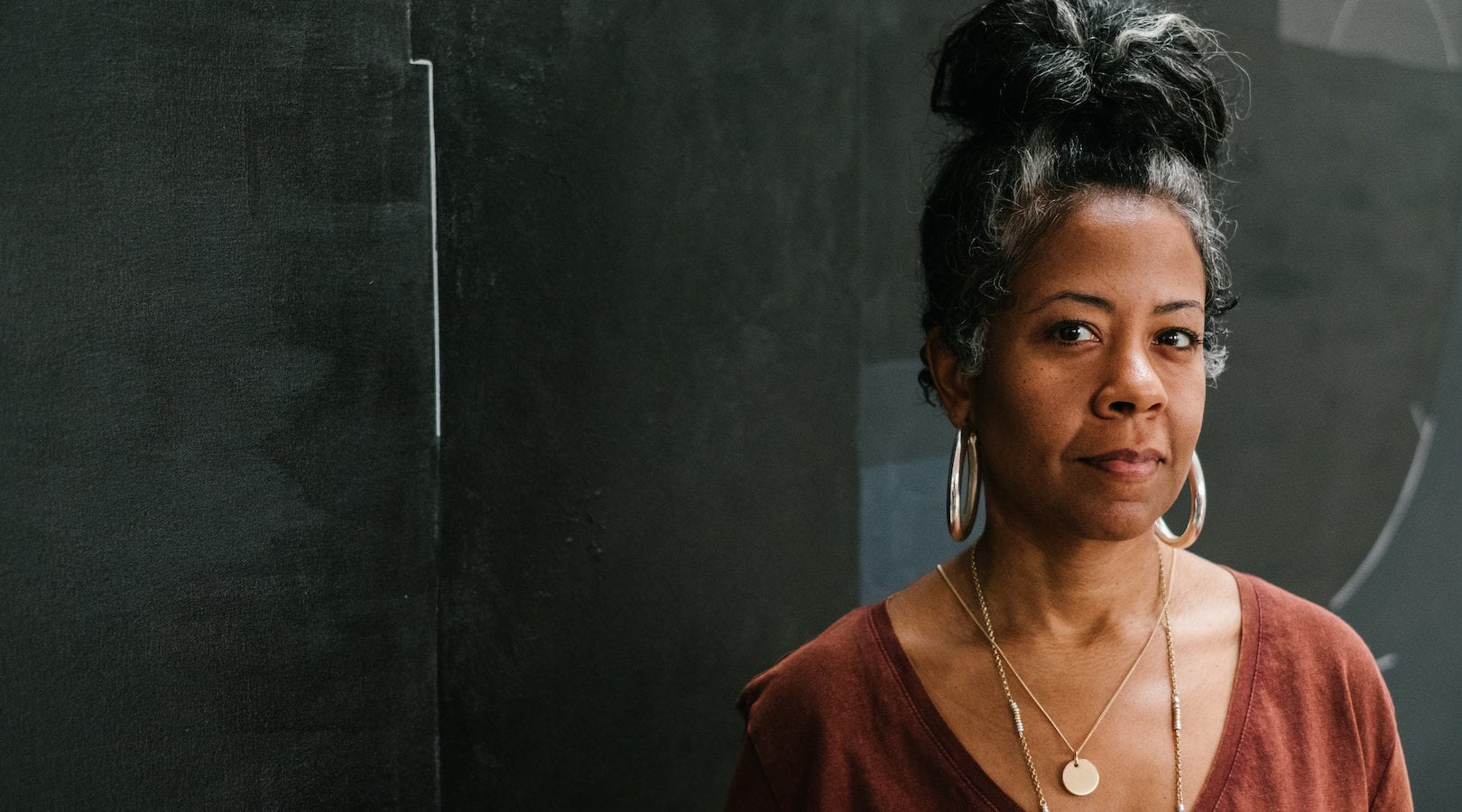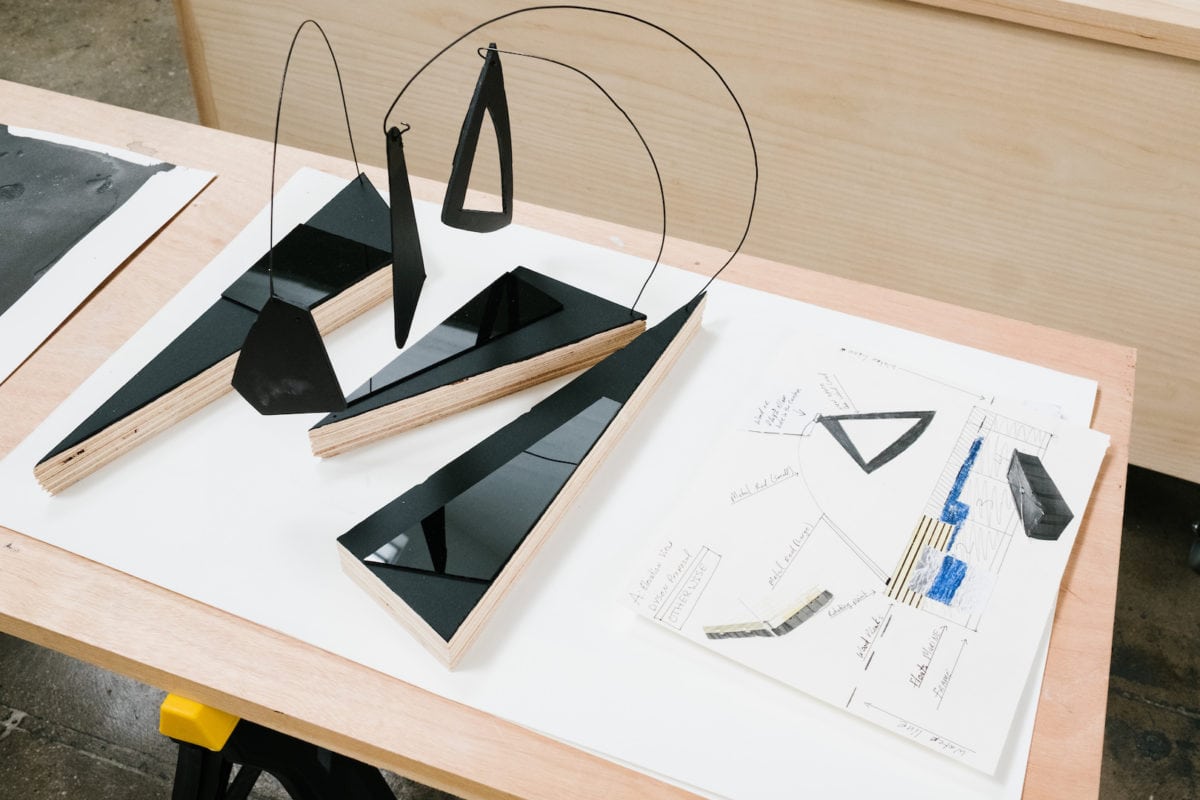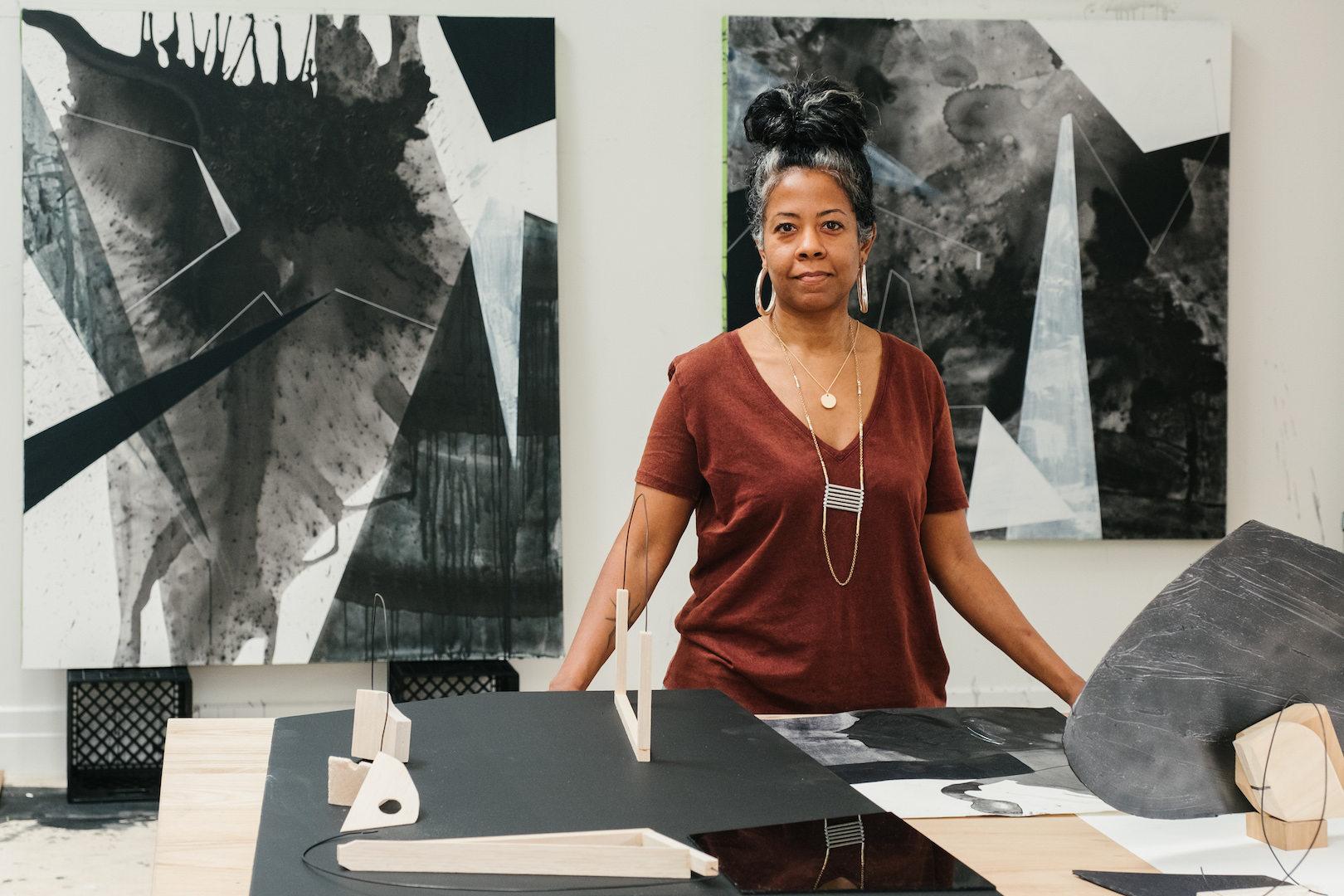 Stepping into Torkwase Dyson’s studio in Jersey City, I notice the precision embedded in her sun-filled space, reflecting her meticulously-researched work in painting and drawing. A series of unfinished paintings lean towards the wall, sculpture mock-ups occupy a large table, and books take the centre stage. Following a solo exhibition at The Drawing Center in New York, as well as being included in The Whitney’s ongoing group exhibition Between The Waters, Dyson is the subject of another solo show at the Graham Foundation, where she is currently a Fellow.
Stepping into Torkwase Dyson’s studio in Jersey City, I notice the precision embedded in her sun-filled space, reflecting her meticulously-researched work in painting and drawing. A series of unfinished paintings lean towards the wall, sculpture mock-ups occupy a large table, and books take the centre stage. Following a solo exhibition at The Drawing Center in New York, as well as being included in The Whitney’s ongoing group exhibition Between The Waters, Dyson is the subject of another solo show at the Graham Foundation, where she is currently a Fellow.
What are the distinctions between Wynter-Wells School at the Graham Foundation and the previous exhibition at The Drawing Center?
Wynter-Wells School in Chicago resumes the previous New York show’s effort to form a group of like-minded people. Imagine a space where ideas incubate, knowledge is shared, and once the information rests, everyone can go their own ways. This is a repository for architecture, engineering, spatial ideas, infrastructure and pedagogical approaches. I am asking for sources from people working in these fields, while trying to figure a new form within the history of painting and sculpture. The big difference is that the Graham Foundation show is sculpture-heavy with two significant sculptures. They’re taking black compositional thought to other questions around the idea of hyper-shape and space as form. We don’t use the word “classes” in this case, because it gives false expectations; instead, we organize workshop seminars. There are landscape architects, social theorists, painters, physical scientists sharing their concerns. Also, I will be using the Graham as a studio, so I will be at their top floor space during the summer.
We don’t use the word “classes” in this case, because it gives false expectations; instead, we organize workshop seminars. There are landscape architects, social theorists, painters, physical scientists sharing their concerns. Also, I will be using the Graham as a studio, so I will be at their top floor space during the summer.
Your drawings encapsulate absence by emphasizing the negative space invisible to the eye. This makes me think about architecture and spatiality. How much space we occupy is dictated by many social and economic factors, including the architecture.
I try to understand the breadth of those facts as someone not trained in architecture. This is art as a way of learning and knowing. I am hyperaware of environmental issues, but also it allows me to think about history in a different way, everything from literary text to empirical evidence around science. Then there are notions like war, migration, child slavery. How do I learn these histories outside the genre of an art exhibition or even outside the contemporary moment? How do I learn what migration or emancipation is? Or how did Malevich come up with the black square? These exhibitions are simultaneously asking me to revisit fields of knowledge I came up with in painting and sculpture. They are providing me with a way to think rigorously.
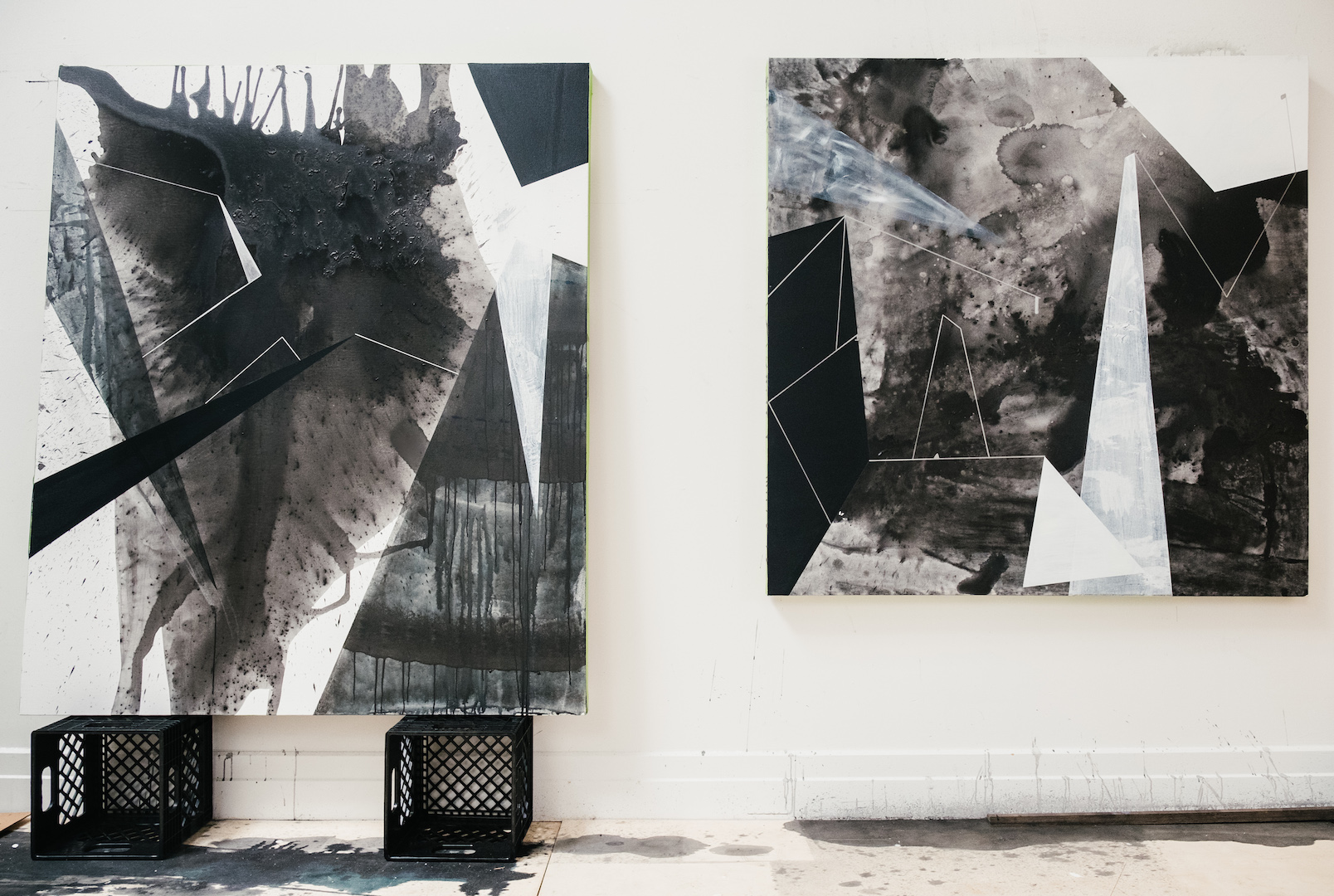 Is your practice of learning an accumulative process or is it based on unlearning and rejecting what you’ve internalized so far?
Is your practice of learning an accumulative process or is it based on unlearning and rejecting what you’ve internalized so far?
It is both. I’ve been reading a book on bodies of dissent where there is a phrase about disconnecting ontologies. The author looks at slave people who self-emancipated and deliberately disconnected from their ontologies. I’m interested in the idea around learning and unlearning to disrupt or make something new. As I unlearn something, a space is made. I don’t necessarily want to fill that space quickly, or when I learn something I don’t want to urgently apply that to something. I want to be able to unlearn something because it’s actually much more complicated than how it looks. Learning something is a new position and condition, but I want to be able to say, “Let me think about that for a minute.” This is dislocating from something ontological with the purpose of understanding who the real audience is for the information.
“As I unlearn something, a space is made… I want to be able to unlearn something because it’s actually much more complicated than how it looks”
What about the politics of wandering? Bodies at risk have to train themselves about where and how they are perceived. Urban architecture dictates routes of movement within a structure. Your drawings remind me of these mental maps from a bird’s eye view.
I was born in Chicago, and as a teenager I moved to different cities in the south [of the United States]. How does the conundrum between all environments, either urban or so-called rural, form each other? The ways I move my body in Mississippi or around New York are in an indelible tight relationship. That agency around moving and seeking safe places are immediate, but also historical regarding formations of urban infrastructures and rural ones. We all have to wonder what’s beneath and around us. Sometimes the architecture has a clear sense of authority that needs to be disrupted or a clear sense of safety to be protected.

You use Jasper Johns’s “Things we already know” expression. Think of something as ubiquitous and meaningful as the American flag; in the end, it’s a geometric abstraction with horizontal lines and star-shaped figures. How does abstraction become political in your work?
Johns knew the flag was a symbol of violence and war, but it posed as a symbol of peace and autonomy. It’s about using painting as a language and asking how to deconstruct the meaning of icons and symbols. And there is Malevich with the square—there is zero nationalism there with no space for hyper-belonging that tears nations apart. I am trying to make a move with geometric abstraction within the history of visual politics, considering spatiality and negative space. We think we know the history of black liberation or Henry Box Brown, for example. If you Google it, the crate he put himself into in order to escape slavery will come out, but what we don’t know is the pressure of the crate or its movement. Or today, we don’t know everything about the Dakota pipeline. We understand these things as ubiquitous and quotidian shapes just like the flag. The crate is square, the pipeline is circular, but they are unknown to us. Geometric abstraction has the power to create these gaping holes.
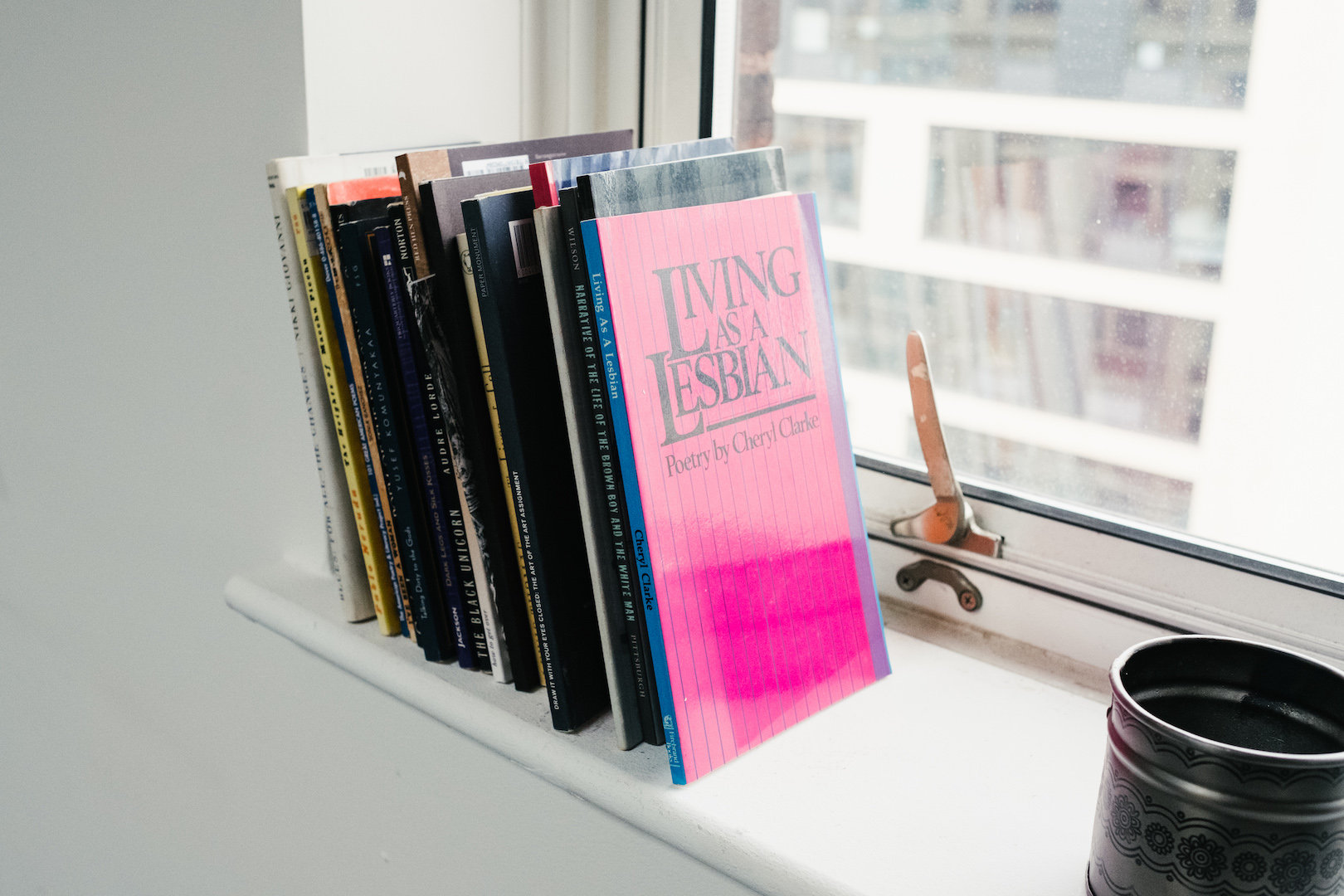 Do you start with an idea and transfer that to your lines or do they determine the idea in the end?
Do you start with an idea and transfer that to your lines or do they determine the idea in the end?
As you see, my studio is compartmentalized—I like segments [laughs]. The section I am operating at my studio right now is referential, where I come up with concepts for paintings and drawings with deep research. I leave them alone, however, for small drawings. They’re creations of improvisation and rapidity. I try to make as many moves as possible so that I can embody cognitive knowledge around form by making. This is more about finding the potential of the curve or the rectangle. They specifically have to do with an equation I am setting up about African American liberation. When I look at them individually, instead of those histories, I think about spatial equations I have extracted from those histories. If I think about Box Brown, I am left with the square; when I think about Harriet Jacobs, it is the triangle. Those shapes are from a certain language where I don’t have to push their legibility away from those recognizable objects. The Graham Foundation work is about negative space and all those shapes, so there is a direct reference to figuring a space in terms of these historic figures’ emancipation.
Photography © Don Stahl
